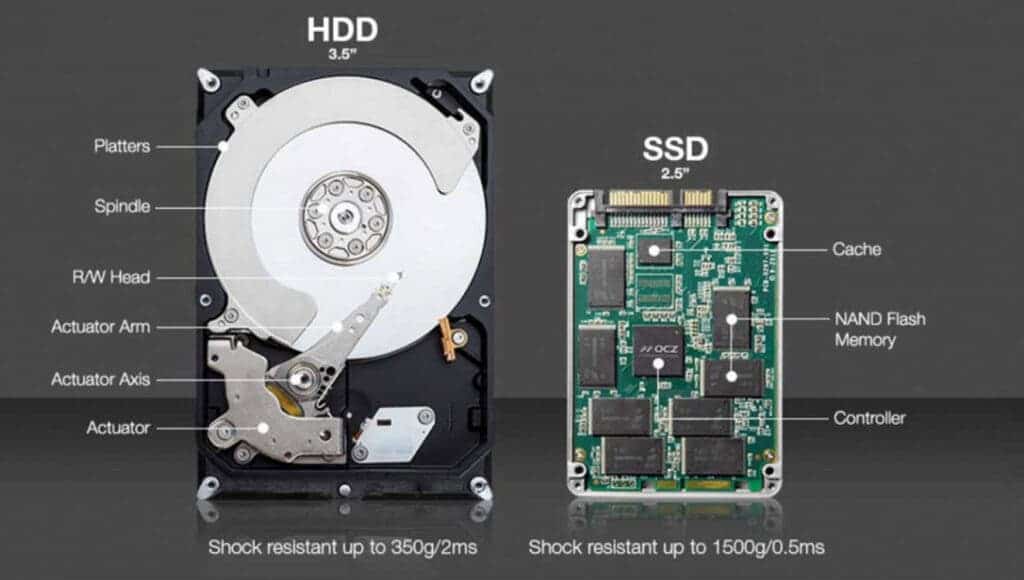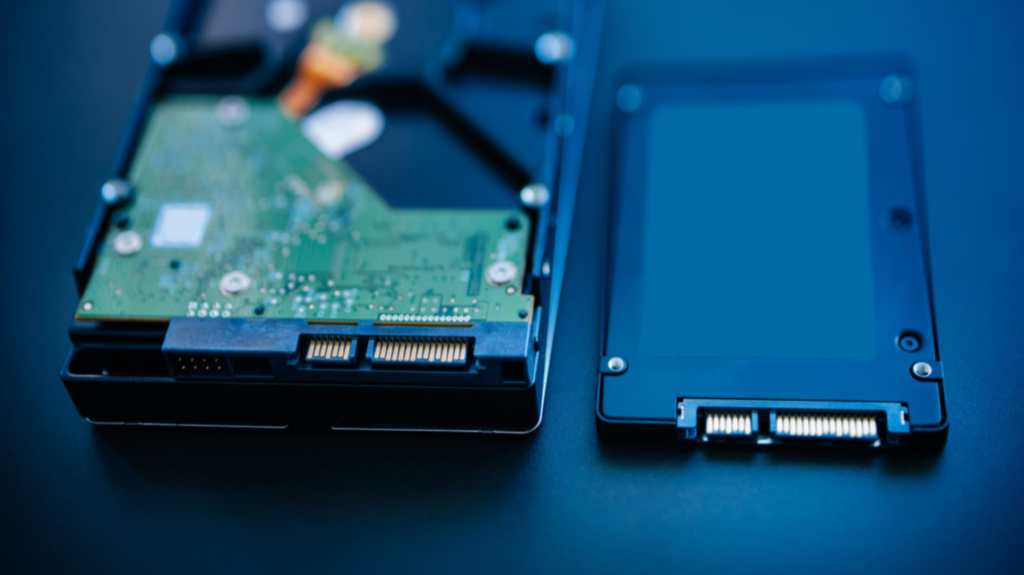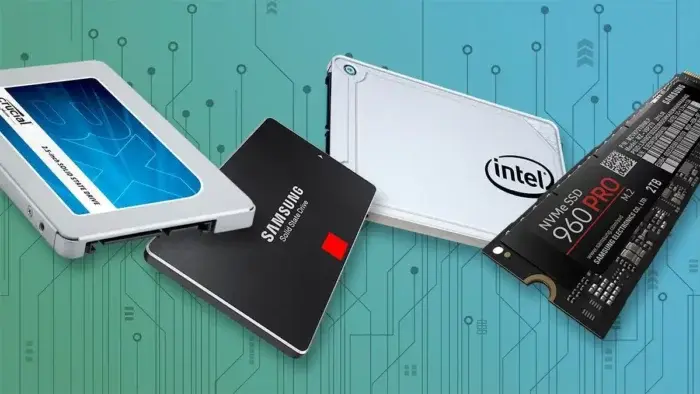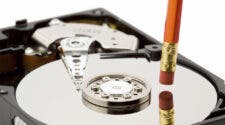It is public knowledge that solid-state drives are “faster” than mechanical hard drives. But the question is why are solid-state drives faster than mechanical hard drives? The truth is that both drives use completely different working principles. This is a major factor in the speed difference between the two.

Working principle of mechanical hard disk
The internal structure of a mechanical hard disk has a couple of components. It has a motor, a magnetic disk, a magnetic head arm, and a magnetic head. When the mechanical hard disk is working, the magnetic head suspends a few nanometers above the disk surface. There are many small lattices on the disk surface. In addition, there are many small magnetic particles in the small lattices.

The magnetic particles on these disks have a certain polarity. When the polarity of the magnetic particles is downward, it is recorded as 0. When the polarity of the magnetic particles is upward, it is recorded as 1. Thus, the magnetic head can read the magnetic particles. It does this by identifying the polarity of the magnetic particles. The magnetic head can also use its changing magnetic field to change the polarity of the magnetic particles on the disk. Thus, the data on the disk can be written and rewritten.
The disk has several sectors and tracks. This makes it possible to accurately locate the position of the data on the disk surface. The data is stored on the seventh sector of the fifth track of the disk.
The head will first swing over the fifth track, and then wait for the seventh sector to turn over. The data can be read only when the seventh sector turns under the magnetic head.
This is the working principle of mechanical hard disks. It is precisely because mechanical hard disks use magnetic poles to store data that mechanical hard disks are often called magnetic disks.
Working principle of solid-state drives
The working principle of solid-state drives (SSD) is completely different from that of mechanical hard drives. Solid-state drives use a purely electronic structure. The basic unit for storing data in a solid-state hard disk is called a floating gate transistor. The basic structure includes a floating gate layer for storing electrons, a control electrode G, a substrate P, a source electrode D and a drain electrode S.
We count the number of electrons in the floating gate layer as 0 above a certain value and 1 below a certain value.

Data input
When writing data, there is a need to apply a high voltage to the control electrode G. Thus, the electrons can pass through the tunnelling layer and enter the floating gate layer. Because of the existence of the insulating layer, the electrons can no longer move forward and therefore stays in the floating gate layer. When we remove the voltage, these electrons will still remain in the floating gate layer. Because the tunnelling layer is essentially an insulator, it can trap electrons so that it can store a bit of data.
How long these electrons can “trap” is the number of years that a solid-state drive can store data. Generally, a new solid-state drive can store data for 10 years. Because with the passage of time, there are continuous electronic “jailbreaks”. When the number of “jailbreak” electrons reaches a certain number, the data we save automatically deletes.
Wipe data
When we erase the data on the SSD, we are actually releasing these electrons. This means applying a high voltage on the substrate so that the electrons flow out and the information erases. Through the above description, we understand the process of writing and erasing data.
Read data
The principle of how it reads data is also very simple. When there are no electrons in the floating gate layer (the stored data is 1), we give a low voltage to the control stage, due to the low voltage, the electrons can only attract to the position close to the tunnelling layer. However, it can not pass the tunnelling layer, so the electrode drain can turn on to form a current.
If it detects current, it means that it is not storing electrons, and the read data is 1. When there are electrons in the floating gate layer (the stored data is 0). We also give a low voltage to the control electrode. Since the electrons in the floating gate layer repel these electrons, the electrons can not attract to the position close to the tunnelling layer. The source drain will not conduct and no current will flow.
If it doesn’t detect current, it means that the floating gate layer stores a certain amount of electrons, and the read data is 0. Countless floating gate transistors can stack together to store a large number of 0s and 1s. They are similar to bookshelves in a library, storing unlimited 0101 data.
Mechanical Hard Disks Vs Solid-State Drives
Compared with the mechanical structure of the mechanical hard disk, the pure electronic structure of the solid-state hard disk has very prominent advantages in terms of access speed. Before the mechanical hard disk reads data, it needs to swing the magnetic head arm to the top of the corresponding track, and then wait for the corresponding sector to turn over. Although most of the current mechanical hard drives are 7200 rpm or 5400 rpm, which seems to be very fast, these two operations still cause a delay of about ten milliseconds.

This delay is really insignificant to humans, but it does have a significant impact on computer memory and CPU. The whole process of solid-state drives is electronic interaction. Thus the speed of electronic signals far exceeds the mechanical structure of magnetic head arms and magnetic disks.
If your data randomly scatter in all corners of the disk, the mechanical hard disk needs to go through multiple seeks and addresses, and wait for the sectors to rotate to the bottom of the magnetic head many times. Therefore, when the mechanical hard disk reads scattered files, the performance is very weak and slow. That is, the random read and write performance is low.
After understanding the principle of solid-state drives, you can understand why solid-state drives have a limit on the number of erasing and writing. This is because, in the process of erasing and writing, electrons repeatedly enter and exit the tunnelling layer. This eventually results in damage to the tunnelling layer.





